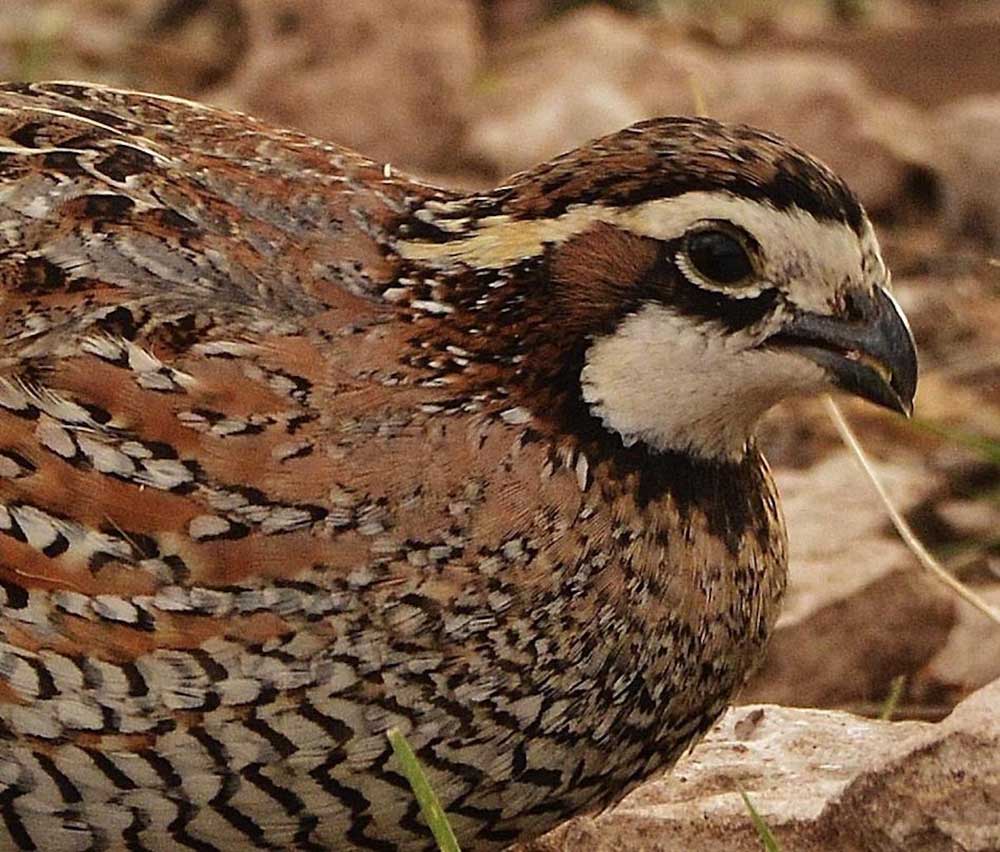Down But Not Out: Ongoing dry conditions prevents quail return in Northern Texas
Published 6:44 pm Friday, November 11, 2022

- Bobwhite quail in Texas need successive years of timely rain to kickstart a long-term turnaround in numbers.
It is a magical moment for a hunter when a pointer goes from a full run to a complete stop in seemingly a single step. Its head turns and dips, its tail rises to the sky.
As the hunters approach the dog, it is so hyped it is shaking in anticipation. And then, just steps in front, a covey of bobwhite quail bursts upwards in every direction attempting to escape.
Trending
The hunters shoulder their shotguns, picking out one bird at a time. The dogs stand their ground, watching where the birds fall so they can make a quick retrieve.
And then the process begins all over again.
In its heyday in the 1980s, Texas had between 200,000 and 250,000 quail hunters who took between 4 and 8 million bobwhite and blue quail annually. They were avid hunters who often paid more per acre for access to prime land than deer hunters were paying for a lease.
During the last boom days, 2015-16 and 2016-17, there were between 65,000 and 91,000 hunters statewide taking 1.2 to 1.8 million quail.
This winter hunters around much of the state are looking at another disappointing season. The exceptions are South Texas, which has had a couple of good years back-to-back, and in the Trans-Pecos where blue quail numbers have risen.
It has been a long downhill road for hunters in the remainder of the state as quail numbers have dipped and remained low more years than not. Quail have always been a boom/bust species in Texas, but until this run there seemed to be more booms.
Trending
There are a lot of factors that go into quail production that impact landowners from food to habitat for nesting and shelter, but the one out of their control is rainfall and that appears to be the key component to maintain momentum from year to year.
“Part of the struggle is not just getting a particular rain, but we need consecutive years, and it is important when that rainfall occurs,” explained John McLaughlin, Texas Parks and Wildlife Department quail program leader.
McLaughlin said summer rains resulted in multiple hatches in South Texas and the Trans-Pecos, but for the remainder of the state the moisture came too late.
For quail in Central Texas and the Rolling Plains the rain needs to come in the spring. Anything after that is a bonus that can produce additional clutches that create super years.
“To maximize production we need rainfall in the early in spring. You need nesting as early as possible. This year we got rain in August and there was some late production, I think. If we had gotten that rain in March, April and May it would have been better,” McLaughlin said.
Not only is the timing important, but so is it coming on a consistent basis from year to year. McLaughlin said it is the spring rains that produces native bunch grasses used for nesting the coming year.
Consistent rains over several years are needed to restock the breeding population. McLaughlin said that because of poor hatches in recent years, there are probably a smaller number of hens in the population. But, while hatches have been down, there has been recruitment into the population meaning younger, more productive hens do exist.
That is important because with a larger number of females, the population can rebound faster. While blue quail may only nest once a year or not at all if conditions are not right, a bobwhite hen will nest once under marginal conditions, but up to four times when everything is right.
McLaughlin said long-term drought can lead to more than poor nesting conditions. It can also make the land susceptible to erosion and growth of unwanted invasive plant species.
Another issue facing quail has been the ongoing fragmentation of Texas’ farmlands and ranches. Although it has been happening for decades there seems to be another round underway with land being sold for development or to landowners for non-agriculture purposes.
“As we are losing farmers and ranchers, we lose some of that institutional knowledge of how to take care of the land,” McLaughlin said.
He added he hopes the new landowners, whether they buy 10 acres or a thousand, have some focus on wildlife and realize there are lot of different things they could do to impact habitat.
“We want to use every tool in the toolbox. Cattle are an inexpensive way to control herbaceous plants. If they are not managing with grazing, then you are talking about some of the other things like fire,” McLaughlin said.
Another issue impacting bobwhite quail is climate change, and that again makes having good habitat important. Quail look for cooler areas for both nesting and roosting, which tends to be somewhere with herbaceous or grass cover.
Quoting another quail enthusiast, McLaughlin said, “if your cow piles are higher than your grass, you might have a problem.”
While hunter numbers are driven by quail numbers in Texas, there is a trend nationwide where interest in small game hunting is declining overall. However, for those who have hunted behind dogs, the magic that is quail hunting is a draw hard to resist.
Quail season in Texas runs through Feb. 26.






